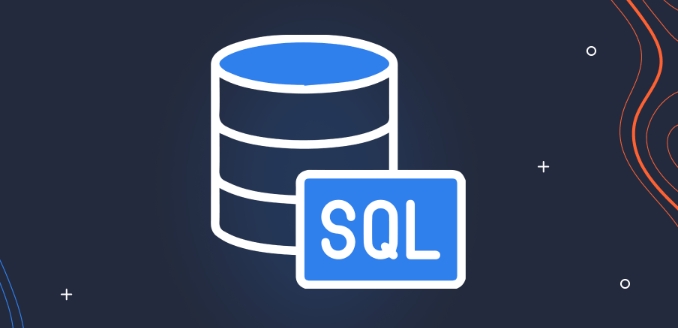How to find the Nth highest value in a SQL column? (e.g., second highest salary)
Jul 12, 2025 am 01:58 AMThere are three common methods to find the Nth highest value of a column in SQL. 1. Use subquery and LIMIT/OFFSET: First sort the target column in descending order, skip the first N-1 record and then take one. It is suitable for simple scenarios but may affect performance; 2. Exclude maximum values ??layer by layer through nested subqueries: the logic is clear but the structure is complex when the hierarchy increases; 3. Use DENSE_RANK or ROW_NUMBER window function (recommended): Flexible processing of duplicate values, supports precise ranking, and is suitable for database environments that support window functions. Which method to choose depends on the specific database type, data volume and structural requirements.

Finding the Nth highest value of a column in SQL, such as "second highest salary", is not a problem that can be solved simply by taking the maximum value or sorting it. The key is how to skip the previous few maximum values ??and then get out exactly what you want.

Methods using subquery and LIMIT/OFFSET
This is one of the most common and easy to understand methods. The basic idea is: first sort the target column in descending order, then skip the first N-1 record, and then take one.

SELECT sales FROM employees ORDER BY salary DESC LIMIT 1 OFFSET N-1;
For example, to check the second highest salary:
SELECT sales FROM employees ORDER BY salary DESC LIMIT 1 OFFSET 1;
Note: This method may be a bit slow when the data volume is large or N is large, and if there are duplicate values ??(such as two identical wages), it will still skip the specified number of rows.
Exclude maximum values ??using subqueries
If you don't want to use LIMIT and OFFSET , you can also exclude the maximum values ??one by one through nested queries. For example, if you want to find the second highest salary, you can write this:
SELECT MAX(salary) FROM employees WHERE salary < (SELECT MAX(salary) FROM employees);
The advantage of this method is that it is clear logic and there will be no pagination offset. But the disadvantage is that every time you add a level (such as looking for the third highest), you need to have an extra layer of subquery, which will become more complicated.
For example, find the third highest salary:
SELECT MAX(salary)
FROM employees
WHERE salary < (
SELECT MAX(salary)
FROM employees
WHERE salary < (SELECT MAX(salary) FROM employees)
);Use the DENSE_RANK or ROW_NUMBER window function (recommended)
If you are using a database that supports window functions (such as MySQL 8.0, PostgreSQL, SQL Server, Oracle, etc.), this method is the most flexible and recommended.
Take DENSE_RANK() as an example:
SELECT sales
FROM (
SELECT salary, DENSE_RANK() OVER (ORDER BY salary DESC) AS rnk
FROM employees
) ranked
WHERE rnk = N; This can avoid the problem of ranking jumps due to duplicate values. For example, when two are tied for first place, DENSE_RANK() will continue to rank the next value to 2, while RANK() will jump to 3.
If you want to count as a ranking even if there are multiple identical values, use DENSE_RANK() ; if you want to skip these duplicate rankings, use RANK() .
Basically these are the methods. Different scenarios can be used to choose different methods: subquery exclusion method can be used for simple queries, and window functions are recommended for large data sets. If compatibility requirements are high, LIMIT OFFSET can also be considered. Which one is suitable depends on your specific database environment and data structure.
The above is the detailed content of How to find the Nth highest value in a SQL column? (e.g., second highest salary). For more information, please follow other related articles on the PHP Chinese website!

Hot AI Tools

Undress AI Tool
Undress images for free

Undresser.AI Undress
AI-powered app for creating realistic nude photos

AI Clothes Remover
Online AI tool for removing clothes from photos.

Clothoff.io
AI clothes remover

Video Face Swap
Swap faces in any video effortlessly with our completely free AI face swap tool!

Hot Article

Hot Tools

Notepad++7.3.1
Easy-to-use and free code editor

SublimeText3 Chinese version
Chinese version, very easy to use

Zend Studio 13.0.1
Powerful PHP integrated development environment

Dreamweaver CS6
Visual web development tools

SublimeText3 Mac version
God-level code editing software (SublimeText3)

Hot Topics
 What is the difference between HQL and SQL in Hibernate framework?
Apr 17, 2024 pm 02:57 PM
What is the difference between HQL and SQL in Hibernate framework?
Apr 17, 2024 pm 02:57 PM
HQL and SQL are compared in the Hibernate framework: HQL (1. Object-oriented syntax, 2. Database-independent queries, 3. Type safety), while SQL directly operates the database (1. Database-independent standards, 2. Complex executable queries and data manipulation).
 Comparison and differences of SQL syntax between Oracle and DB2
Mar 11, 2024 pm 12:09 PM
Comparison and differences of SQL syntax between Oracle and DB2
Mar 11, 2024 pm 12:09 PM
Oracle and DB2 are two commonly used relational database management systems, each of which has its own unique SQL syntax and characteristics. This article will compare and differ between the SQL syntax of Oracle and DB2, and provide specific code examples. Database connection In Oracle, use the following statement to connect to the database: CONNECTusername/password@database. In DB2, the statement to connect to the database is as follows: CONNECTTOdataba
 Usage of division operation in Oracle SQL
Mar 10, 2024 pm 03:06 PM
Usage of division operation in Oracle SQL
Mar 10, 2024 pm 03:06 PM
"Usage of Division Operation in OracleSQL" In OracleSQL, division operation is one of the common mathematical operations. During data query and processing, division operations can help us calculate the ratio between fields or derive the logical relationship between specific values. This article will introduce the usage of division operation in OracleSQL and provide specific code examples. 1. Two ways of division operations in OracleSQL In OracleSQL, division operations can be performed in two different ways.
 Detailed explanation of the Set tag function in MyBatis dynamic SQL tags
Feb 26, 2024 pm 07:48 PM
Detailed explanation of the Set tag function in MyBatis dynamic SQL tags
Feb 26, 2024 pm 07:48 PM
Interpretation of MyBatis dynamic SQL tags: Detailed explanation of Set tag usage MyBatis is an excellent persistence layer framework. It provides a wealth of dynamic SQL tags and can flexibly construct database operation statements. Among them, the Set tag is used to generate the SET clause in the UPDATE statement, which is very commonly used in update operations. This article will explain in detail the usage of the Set tag in MyBatis and demonstrate its functionality through specific code examples. What is Set tag Set tag is used in MyBati
 What does the identity attribute in SQL mean?
Feb 19, 2024 am 11:24 AM
What does the identity attribute in SQL mean?
Feb 19, 2024 am 11:24 AM
What is Identity in SQL? Specific code examples are needed. In SQL, Identity is a special data type used to generate auto-incrementing numbers. It is often used to uniquely identify each row of data in a table. The Identity column is often used in conjunction with the primary key column to ensure that each record has a unique identifier. This article will detail how to use Identity and some practical code examples. The basic way to use Identity is to use Identit when creating a table.
 How to solve the 5120 error in SQL
Mar 06, 2024 pm 04:33 PM
How to solve the 5120 error in SQL
Mar 06, 2024 pm 04:33 PM
Solution: 1. Check whether the logged-in user has sufficient permissions to access or operate the database, and ensure that the user has the correct permissions; 2. Check whether the account of the SQL Server service has permission to access the specified file or folder, and ensure that the account Have sufficient permissions to read and write the file or folder; 3. Check whether the specified database file has been opened or locked by other processes, try to close or release the file, and rerun the query; 4. Try as administrator Run Management Studio as etc.
 How to use months_between in SQL
Jan 25, 2024 pm 03:23 PM
How to use months_between in SQL
Jan 25, 2024 pm 03:23 PM
MONTHS_BETWEEN in SQL is a common function used to calculate the month difference between two dates. How it is used depends on the specific database management system.
 Database technology competition: What are the differences between Oracle and SQL?
Mar 09, 2024 am 08:30 AM
Database technology competition: What are the differences between Oracle and SQL?
Mar 09, 2024 am 08:30 AM
Database technology competition: What are the differences between Oracle and SQL? In the database field, Oracle and SQL Server are two highly respected relational database management systems. Although they both belong to the category of relational databases, there are many differences between them. In this article, we will delve into the differences between Oracle and SQL Server, as well as their features and advantages in practical applications. First of all, there are differences in syntax between Oracle and SQL Server.







